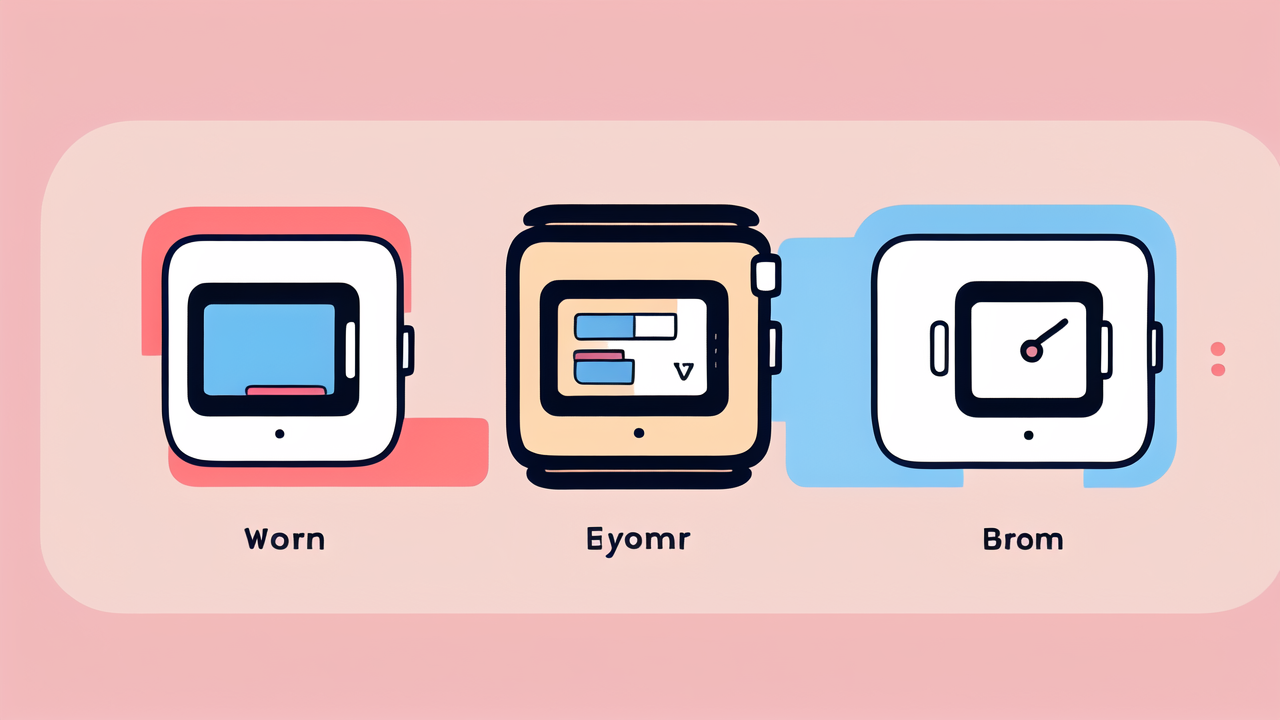Understanding the Smartwatch Landscape in the United States
The Evolution of the Smartwatch Market
Smartwatches have come a long way since their inception. Early models were basic, offering little more than time and notifications. Today's smartwatches are sophisticated devices. They can track health metrics, make calls, and even act as digital wallets.

The market has seen rapid growth in recent years. This is due to increased consumer interest and technological advancements. Smartwatches now offer features like pulse monitoring, GPS tracking, and water resistance. These improvements have made them more appealing to a wider audience.
As the technology evolves, so do consumer expectations. People now look for devices that can seamlessly integrate into their daily lives. This has led to a focus on user-friendly interfaces and longer battery life.
Key Players and Market Share
The U.S. smartwatch market is dominated by a few key players. Apple leads the pack with its Apple Watch series. They hold a significant portion of the market share. Samsung follows closely with its Galaxy Watch line.
Other notable brands include Fitbit, Garmin, and Fossil. These companies cater to different niches within the market. Fitbit focuses on fitness enthusiasts. Garmin targets outdoor adventurers. Fossil appeals to those seeking a more traditional watch aesthetic.
Each brand has its strengths and weaknesses. Apple excels in seamless integration with iPhones. Samsung offers compatibility with both Android and iOS. Fitbit provides detailed health tracking. Understanding these differences is crucial for consumers.
Consumer Trends in Smartwatch Adoption
Smartwatch adoption in the U.S. has been steadily increasing. More people are recognizing the value of these devices in their daily lives. Health and fitness tracking are major drivers of this trend.
Many consumers use smartwatches to monitor their physical activity and heart rate. This has become especially important in recent years. People are more health-conscious and appreciate the insights these devices provide.
Another trend is the use of smartwatches for contactless payments. This feature has gained popularity due to its convenience and hygiene benefits. As more retailers accept digital payments, this trend is likely to continue growing.
Evaluating Features and Specifications
Assessing the Importance of Health and Fitness Integration
Health and fitness features are now central to most smartwatches. These devices can track steps, monitor heart rate, and even measure blood oxygen levels. Some models offer advanced features like ECG monitoring and fall detection.

For many users, these health tracking capabilities are a primary reason for purchase. They provide valuable insights into daily activity and overall wellness. Some watches can even detect irregular heart rhythms, potentially alerting users to serious health issues.
When choosing a smartwatch, consider which health features are most important to you. Do you need basic step counting, or are you looking for more advanced metrics? Some watches offer guided workouts and personalized fitness plans.
The Role of Aesthetics and Design in Smartwatch Selection
While functionality is crucial, the look and feel of a smartwatch are also important. After all, it's a device you'll wear every day. Smartwatches come in various styles, from sporty to elegant.
Consider the watch face size and shape. Some prefer larger displays for easier reading. Others opt for smaller, more discreet options. Many smartwatches offer customizable watch faces. This allows you to change the look to suit different occasions.
The band material and style are also key factors. Options range from silicone for workouts to leather for formal settings. Some watches have interchangeable bands. This feature allows for greater versatility in your everyday wear.
Analyzing Performance and Battery Life for Daily Use
Performance and battery life are crucial for a good smartwatch experience. A laggy interface or frequent charging can be frustrating. Look for watches with powerful processors and optimized software.
Battery life varies greatly between models. Some need daily charging, while others can last a week or more. Consider your usage patterns when evaluating battery life. Heavy use of features like GPS will drain the battery faster.
Also, think about charging convenience. Some watches use proprietary chargers, while others support wireless charging. Fast charging capabilities can be a lifesaver when you're short on time.
Making the Decision: What to Consider Before Purchase
Navigating the Price Point Spectrum
Smartwatches come in a wide range of prices. Budget options start around $50, while high-end models can exceed $1000. Determine your budget before shopping. This will help narrow down your options.

Remember, higher price doesn't always mean better value. Mid-range watches often offer a good balance of features and affordability. Consider what features are most important to you and prioritize accordingly.
Sales and discounts can make premium watches more accessible. Keep an eye out for deals, especially during holiday seasons. Refurbished models can also offer good value if you're comfortable with pre-owned devices.
Compatibility with Ecosystems and Platforms
Ensure the smartwatch you choose is compatible with your smartphone. Some watches work best within specific ecosystems. For example, Apple Watches are designed for iPhones. They offer limited functionality with Android devices.
If you use an Android phone, consider watches that run on Wear OS or Samsung's Tizen. These offer better integration with Android devices. Some watches work equally well with both iOS and Android. These can be a good choice if you switch between platforms.
Also, consider the app ecosystem. Popular watches have a wide range of available apps. This can greatly expand the functionality of your device. Check if the apps you use regularly are available for the watch you're considering.
Long-Term Value and Warranty Considerations
Think about the long-term value of your purchase. Will the watch receive regular software updates? This is important for maintaining features and security over time. Some brands are better than others at supporting older models.
Check the warranty terms before buying. Most smartwatches come with a one-year warranty. Some offer extended warranties for an additional cost. This can be worth considering for more expensive models.
Durability is another factor in long-term value. Look for watches with sturdy build quality and water resistance. These features can help your watch last longer and withstand daily wear and tear.
In conclusion, choosing the right smartwatch involves balancing features, design, and price. Consider your needs and preferences carefully. With the right choice, a smartwatch can be a valuable addition to your daily life.




Leave a comment
This site is protected by hCaptcha and the hCaptcha Privacy Policy and Terms of Service apply.